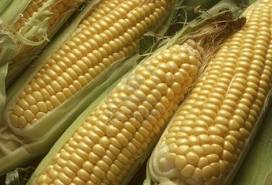
There was cause for optimism coming into 2015. A collapsing oil price had to potential to kick-start economic growth. The shambles at Eskom suggested Government would see the light and remove its dead hand from the electricity supply sector, encouraging private sector participation. Plus, one of the hidden assets of the nation, its agricultural production, was set for a normal season. The first fell away when the Zuma Administration decided to milk motorists with an 80.5c a litre fuel tax increase. Political dogma blocked the obvious solution to Eskom’s problems with, worse, a further R23bn more needed to be injected into it to keep the SOE afloat. And now comes news the weather is compounding land-reform nervous farmer woes with the worst drought in a dozen years. Time to re-adjust those 2015 economic targets. – AH
(Bloomberg) — South Africa is importing maize for the first time in 11 months as the worst drought since 1992 destroyed crops in the continent’s biggest producer, the biggest grain farmers’ organization said.
The nation will need to import 934,000 metric tons of yellow maize, worth about $137 million at current international prices, from countries such as Argentina and Ukraine in the year the year through to the end of March 2016, Grain SA Chief Executive Officer Jannie de Villiers said in an interview in Bloomberg’s Johannesburg office on Wednesday. Three shipments of 30,000 metric tons each from the Latin American nation are en route to the Cape Town harbor to be used for feed for dairy cows in the Western Cape province, he said.
The drought has damaged corn in the Free State and North West provinces, which comprised 64 percent of output in 2014. The local price of white variety, a staple food, has risen 27 percent in Johannesburg this year and that of the yellow type, used mainly as animal feed, by 13 percent as the Crop Estimates Committee predicts the smallest harvest since 2007. Late rains at the end of February weren’t enough to salvage crops as most had already pollinated, De Villiers said.
“We’re not talking a big recovery,” he said. “The worrying factor is that not all the cobs have been filled. This drought could hit us next year” as farmers won’t start working their land unless there is sufficient moisture in the ground, he said.
Crop Estimate
The committee expects growers to harvest 9.67 million tons of both white and yellow corn in 2015, 32 percent less than a year earlier. It will release the second prediction for the season on March 25 and may leave the forecast unchanged, according to the median of five analysts’ estimates in a Bloomberg survey. Recent rains may lift the harvest to 10 million tons, De Villiers said.
“It’s not a super-crisis except if they start estimating the white crop down,” he said. “There are parts of the North West where they are not going to harvest anything, zilch, but that was situation at the first crop estimate so from zero you can’t go lower.”
The limited availability of white corn globally makes importing this variety unlikely, which may raise prices in the event of shortages, he said. Grain SA expects a surplus of at least 100,000 tons of this type, which will be enough to meet needs of the country and neighboring Botswana, Lesotho, Namibia and Swaziland, which it traditionally supplies, he said.
Other Crops
Mexico is the world’s biggest producer of white corn and South Africa is the largest grower on the continent. Almost all corn traded on the international market is yellow.
Harvests of crops including sunflower and sorghum have also been damaged.
The increase in prices is likely to push up inflation, De Villiers said. In addition to price of the corn-meal staple rising, poultry and meat costs may also jump as corn is used to feed the birds and livestock.
The nation’s inflation rate fell to a four-year low of 3.9 percent in February, Statistics South Africa said on Wednesday. While price growth has stayed inside the bank’s 3 percent to 6 percent target range for six months, the drought may add to pressure on the cost of food, which climbed 6.4 percent from a year ago.
Inflationary Effect
With the effect of dry weather on the grain, “we could easily go to double digits” in food inflation from about May as more-expensive corn gets absorbed into the supply chain, De Villiers said.
Food comprises 14 percent of South Africa’s inflation basket, according to the national statistics agency. Corn and products related to the grain, such as chicken and beef, contribute 74 percent of that, De Villiers said.
The country has exported 1.4 million tons of yellow corn since the start of the marketing season in May, with China, South Korea and Japan as the biggest buyers, according to the nation’s Grain Information Service. It has sold 475,201 tons of the white variety, with Botswana buying 30 percent of the total.
The marketing year has been changed to end-March, said Wandile Sihlobo, an economist at the Pretoria-based Grain SA.
The organization projects 517,000 tons of yellow-corn demand from Botswana, Lesotho, Namibia and Swaziland in the year to March 2016, Sihlobo said. This excludes possible demand from other neighbors such as Zimbabwe, which usually gets some supply from Malawi, a nation that has also been affected by drought, Sihlobo said.
Most of the corn imported by these countries comes through South African ports and forms part of the 934,000-ton import estimate.
“There’s going to be more pressure on the demand side because Malawi serves a number of countries,” he said.


